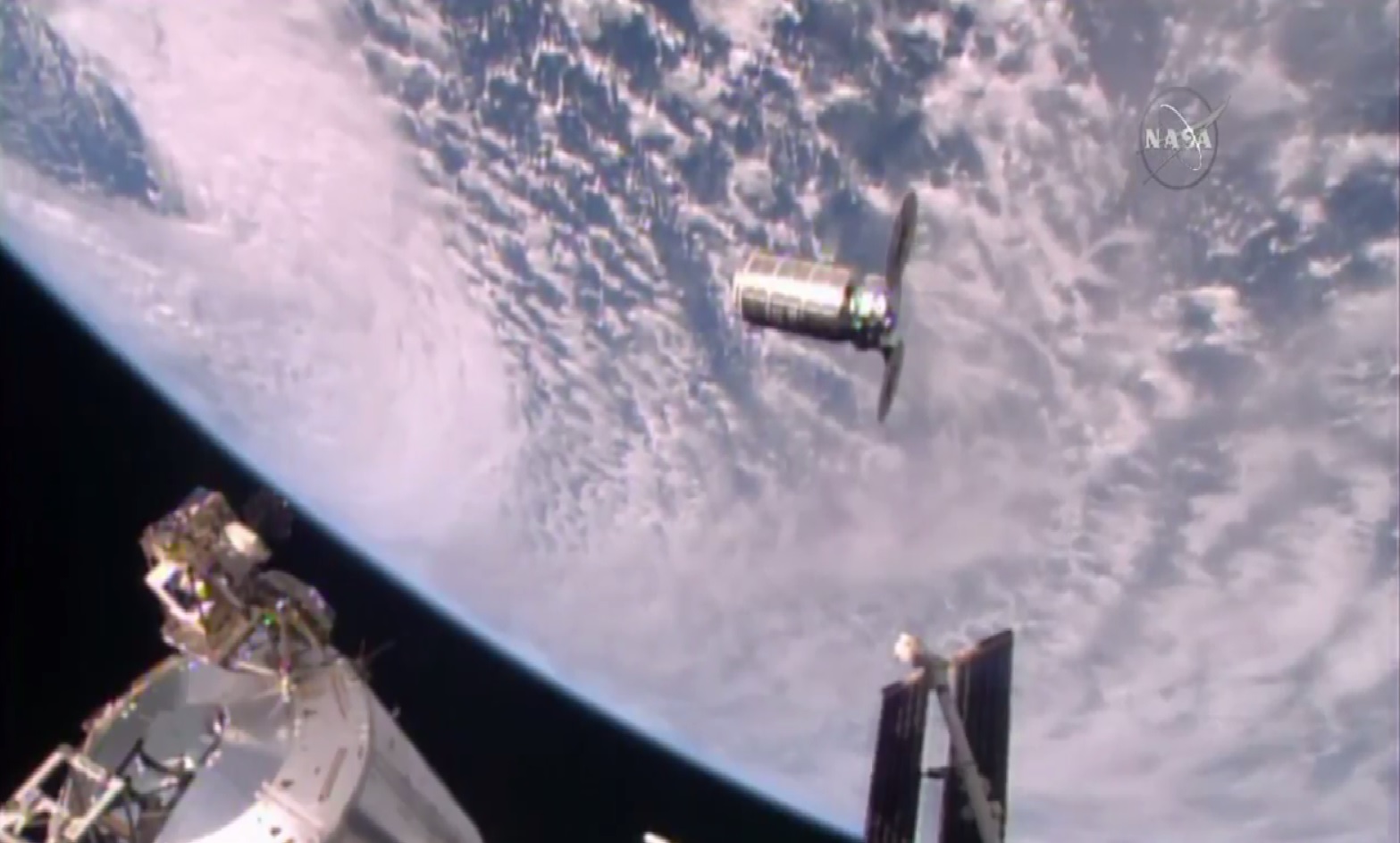Orbital ATK Cygnus Supply Ship Arrives at Space Station

A Cygnus cargo spacecraft arrived at the International Space Station on Sunday (Oct. 23), delivering science experiments and supplies for the station's six-person crew.
The Cygnus spacecraft was captured by the station's robotic arm at 7:28 a.m. EDT (1128 GMT) in order to be attached to an open berthing port later this morning The cargo ship is delivering more than 5,100 lbs. (2,300 kilograms) of supplies and science gear to the station. The ship is named the S.S. Alan Poindexter in honor other of the late NASA astronaut Alan Poindexter, who died in 2012.
Built by the aerospace company Orbital ATK, Cygnus spacecraft are not designed to independently dock with the station. Instead, astronauts and ground crew must use the station's robotic arm to grab the spacecraft and berth it with the station. Japanese astronaut Takuya Onishi used the 57.7-foot-long (17.6 meters) Canadarm2 to grab Cyngus on Sunday morning, with American astronaut Kate Rubins backing him up. Later today, flight controllers at NASA's Mission Control center in Houston will remotely control the arm to install Cygnus on the Unity module, where it will remain for about one month. [Photos: Cygnus Launches Into Orbit on Antares Rocket]
The Cygnus cargo ship launched from NASA's Wallops Flight Facility in Virginia on Monday (Oct. 17). A second spacecraft, a Russian Soyuz, launched toward at the space station early Wednesday (Oct. 20) from Baikonur Cosmodrome, Kazakhstan. It arrived at the space station on Friday (Oct. 21).
Cygnus was launched atop an Antares rocket, also built by Orbital ATK. This was the first Antares launch in nearly two years; in 2014, an Antares rocket (which was also carrying a Cygnus craft to the station) exploded seconds after liftoff. Sunday's launch was not only a return to flight for Antares, but also the first flight of the upgraded Antares 230, which has two new engines in its first stage.
The Cygnus launch was pushed back repeatedly, and even though the spacecraft left Earth ahead of the crewed Soyuz vehicle, "mission managers decided to let the Cygnus take its time on orbit and let the new crewmembers arrive first," NASA officials said in a statement.
Follow Calla Cofield @callacofield. Follow us @Spacedotcom, Facebook and Google+. Original article on Space.com.
Get the Space.com Newsletter
Breaking space news, the latest updates on rocket launches, skywatching events and more!
Join our Space Forums to keep talking space on the latest missions, night sky and more! And if you have a news tip, correction or comment, let us know at: community@space.com.

Space.com is the premier source of space exploration, innovation and astronomy news, chronicling (and celebrating) humanity's ongoing expansion across the final frontier. Originally founded in 1999, Space.com is, and always has been, the passion of writers and editors who are space fans and also trained journalists. Our current news team consists of Editor-in-Chief Tariq Malik; Editor Hanneke Weitering, Senior Space Writer Mike Wall; Senior Writer Meghan Bartels; Senior Writer Chelsea Gohd, Senior Writer Tereza Pultarova and Staff Writer Alexander Cox, focusing on e-commerce. Senior Producer Steve Spaleta oversees our space videos, with Diana Whitcroft as our Social Media Editor.










